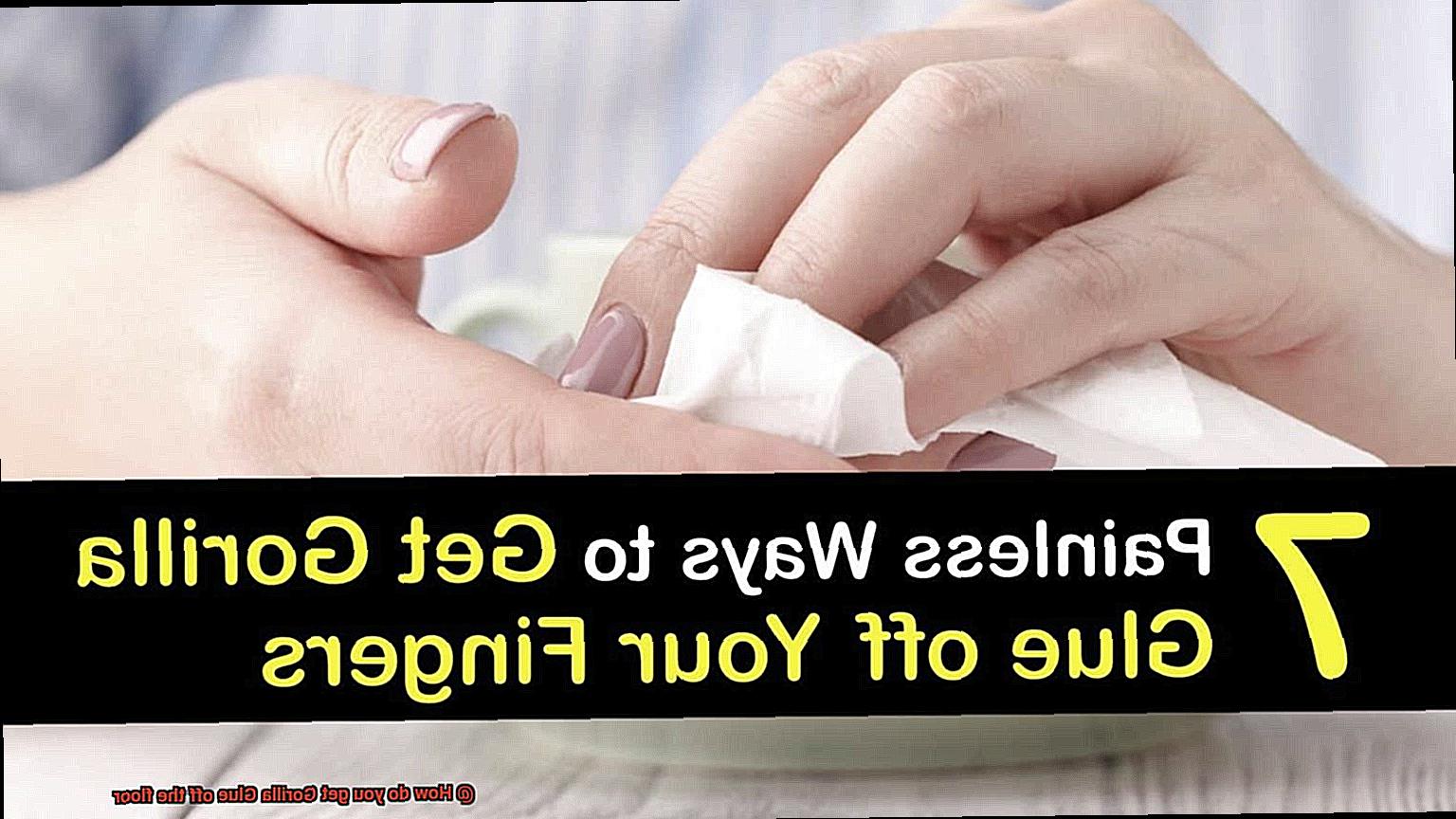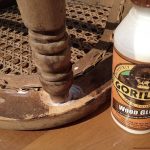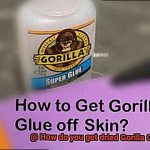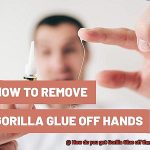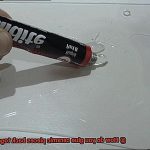Picture this: you’re going about your day, and suddenly, disaster strikes – a glob of Gorilla Glue lands on your pristine floor. Panic sets in as you wonder how on earth you’re going to get rid of this sticky mess. But fear not, my friend, because I’ve got your back.
In this ultimate guide, we’re diving headfirst into the world of removing Gorilla Glue from your floor. We’ll walk you through foolproof methods that will have your floor looking brand new again, without a trace of that stubborn adhesive.
How do you get Gorilla Glue off the floor?
Contents
- 1 How do you get Gorilla Glue off the floor?
- 2 What is Gorilla Glue?
- 3 Why is it Difficult to Remove?
- 4 Act Quickly
- 5 Using Heat to Remove Gorilla Glue from the Floor
- 6 Using Acetone to Remove Gorilla Glue from the Floor
- 7 Using Vinegar to Remove Gorilla Glue from the Floor
- 8 Commercial Adhesive Removers for Removing Gorilla Glue from the Floor
- 9 Safety Considerations When Removing Gorilla Glue from the Floor
- 10 Conclusion
Method 1: Heat It Up and Scrape It Off
Prepare to unleash the power of heat. Grab your trusty hairdryer or heat gun and let’s get to work. Gently warm up the glue until it becomes soft and pliable – just don’t go overboard and fry your flooring. Once it’s nice and malleable, grab a plastic scraper and delicately lift that Gorilla Glue off the floor. If there’s any residue left behind, repeat the process until it’s all gone.
Method 2: Acetone Attack
When all else fails, bring out the big guns – acetone. But before you go wild with it, do a quick test on a hidden part of your floor to make sure it won’t cause any damage. Once you’re in the clear, soak a cloth or sponge with acetone and let it work its magic on that stubborn glue stain for a few minutes. As the glue starts to loosen its grip, grab that plastic scraper again and carefully peel away the softened adhesive. Finish off by wiping the area clean with a damp cloth.
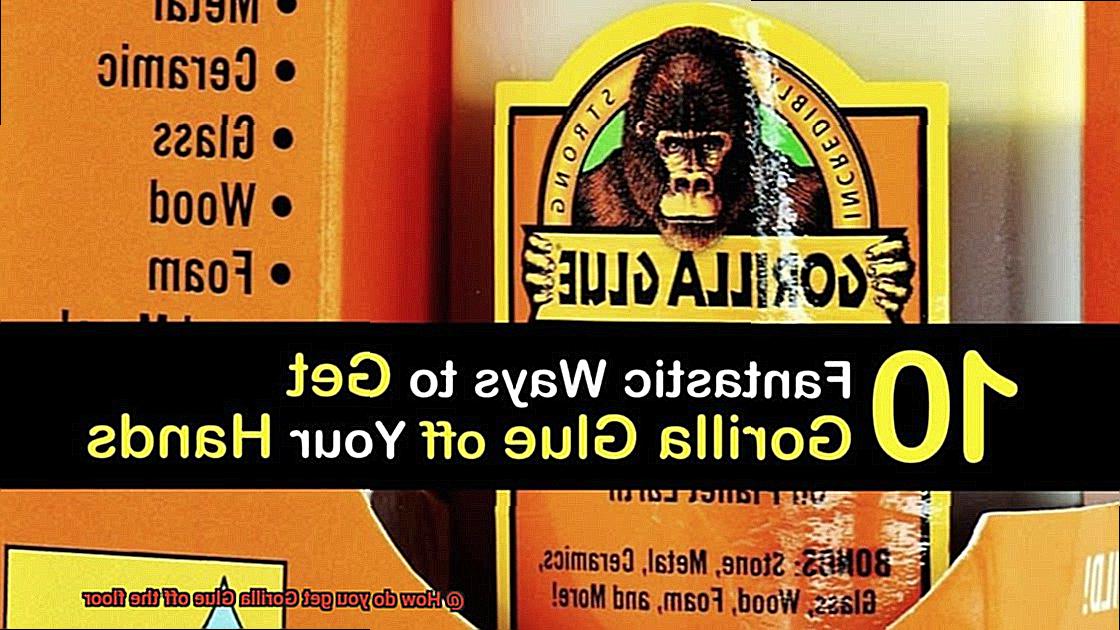
Method 3: Soapy Soak and Scour
Sometimes delicate floors need some extra TLC when dealing with Gorilla Glue. Enter the soapy solution. Mix warm water with a mild dish soap to create your secret weapon. Soak a clean cloth in the soapy goodness and lay it over the glue for a few minutes.
This will help loosen up that pesky adhesive. Grab a soft-bristle brush or sponge and gently scrub in circular motions, coaxing the glue away from your floor. As it starts to give way, wipe it clean with another cloth. Repeat until you’ve banished every last bit of Gorilla Glue.
What is Gorilla Glue?
Gorilla Glue, a renowned brand of adhesive, is celebrated for its unparalleled strength and durability. Crafted from a distinctive polyurethane formula, this adhesive possesses exceptional bonding capabilities, making it a go-to choice for a plethora of household and DIY projects. Its versatility is highlighted by its ability to bond different surfaces including wood, metal, stone, ceramic, and many more.
Available in liquid, gel, and tape forms, Gorilla Glue caters to various application needs. The liquid variant, commonly used and applied with a brush or nozzle, requires moisture to activate and expand, forming a robust bond in the process. On the other hand, the gel form is denser and simpler to control, rendering it perfect for vertical applications or when precise bonding is imperative. For quick fixes and temporary repairs, Gorilla Glue tape offers a convenient alternative.
In addition to its adhesive prowess, Gorilla Glue boasts remarkable gap-filling properties. It effortlessly fills cracks and gaps in surfaces, providing structural reinforcement while mitigating further damage. Consequently, it emerges as an invaluable asset when working with uneven or irregular materials.
While Gorilla Glue’s effectiveness and versatility are indisputable, it necessitates proper handling and precautionary measures. The adhesive’s potent bonding properties can inadvertently result in skin adhesion if not handled with caution. Therefore, wearing protective gloves during application is crucial to prevent any mishaps and avoiding contact with eyes or mouth is highly recommended.
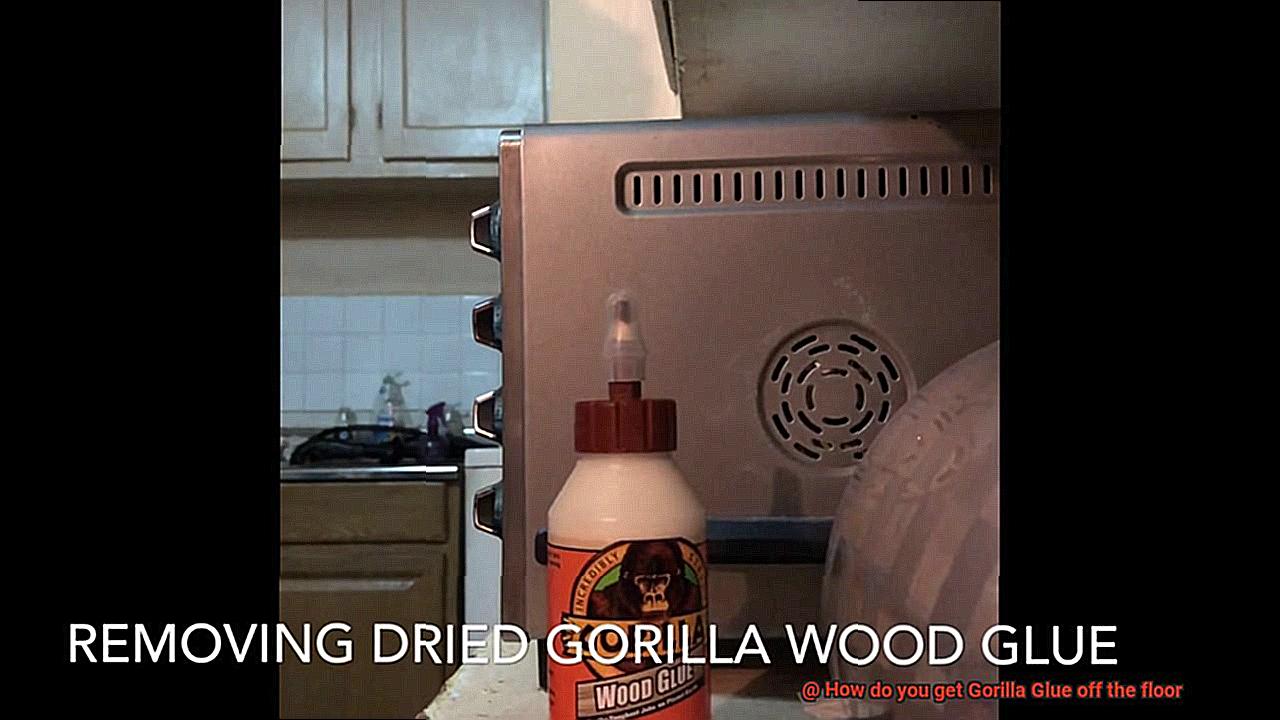
Why is it Difficult to Remove?
Removing Gorilla Glue from the floor can feel like an epic battle against an adhesive beast, and there are several reasons why it is such a difficult task. First, let’s tackle the chemical composition of this mighty glue. Gorilla Glue is made up of polyurethane, a substance that forms an unyielding bond when it comes into contact with moisture. Once it dries, it sets like concrete, creating a bond that can withstand Herculean force and pressure.
But the challenge doesn’t stop there. Gorilla Glue’s adhesive properties are designed to create a permanent bond between surfaces. It clings to the floor like a tenacious gecko on a wall, making separation nearly impossible without causing damage or leaving behind stubborn residue.
Adding to the struggle is the fact that Gorilla Glue becomes waterproof once it fully cures. It laughs in the face of water and common cleaning agents, rendering them useless in breaking down its bond with the floor surface. It’s like trying to douse a fire-breathing dragon with a water pistol.
Time is also not on your side when it comes to removing Gorilla Glue. It dries rapidly and can cure within a few hours. If you don’t act swiftly during this initial drying period, the glue’s grip tightens, and removal becomes an even more formidable task.
The type of floor surface you’re dealing with also plays a role in the difficulty level. Porous materials like wood or concrete eagerly absorb the glue, allowing it to penetrate deep into their very fibers. This makes extraction akin to pulling Excalibur from the stone. Non-porous surfaces like tiles or laminate flooring, on the other hand, offer a slightly better chance of success.
Be warned, however, for improper removal techniques can worsen the situation. Scrubbing vigorously or wielding harsh chemicals might seem like valiant efforts, but they can leave your floor scarred and discolored. Some chemicals may even react with the glue, creating a messy residue that clings even tighter.
Act Quickly
When it comes to dealing with Gorilla Glue spills on the floor, time is of the essence. Acting quickly is essential in order to prevent permanent damage and make the removal process easier. Here’s a step-by-step guide to help you tackle this sticky situation:
- Assess the situation: Take a moment to evaluate the extent of the spill and identify any areas where the glue has spread. This will give you a clear understanding of the problem and allow you to plan your approach.
- Gather your supplies: To effectively remove the glue, you’ll need a few items at your disposal. Grab a plastic scraper, rubbing alcohol or acetone, warm water, mild dish soap, a clean cloth or sponge, and protective gloves. Having these materials ready will save you valuable time.
- Protect yourself and the area: Before you begin cleaning, make sure to put on your gloves to shield your hands from any harsh chemicals. Consider placing old towels or disposable plastic sheets around the affected area to prevent further spreading of the glue or damage to the floor.
- Scraping away excess glue: Gently use a plastic scraper or blunt-edged tool to remove as much of the dried glue as possible. Be cautious not to scratch or damage the surface while doing so, as this could worsen the situation.
- Gentle scrubbing: Dampen a clean cloth or sponge with warm water and mild dish soap, then gently scrub the affected area. Apply light pressure to loosen any remaining glue, but avoid using abrasive materials or scrubbing vigorously, as this may harm certain types of flooring.
- Solvent action: If warm water and dish soap alone do not suffice, try using rubbing alcohol or acetone as a solvent. Test them on a small, inconspicuous area first to ensure they won’t cause discoloration or damage. Apply a small amount to a clean cloth or sponge and gently dab it onto the glue residue. Allow the solvent to sit for a few minutes to soften the glue.
- Scrape away softened glue: Using your plastic scraper or a soft-bristled brush, carefully scrape away the softened glue. Repeat this process as necessary until all the residue is removed.
- Rinse and dry: After successfully removing the Gorilla Glue, rinse the floor thoroughly with warm water to remove any remaining residue from the cleaning agents. Use a clean cloth or sponge to blot dry the area, ensuring no excess moisture is left behind.
Using Heat to Remove Gorilla Glue from the Floor
Heat can be a powerful ally when it comes to removing Gorilla Glue from your floor. One tried-and-true method involves using a hairdryer or heat gun to soften the glue, making it easier to scrape off. By directing the hot air onto the glue and working slowly and patiently, you can gradually loosen its hold on your floor.
But remember, caution is key. Apply the heat carefully and in short bursts to avoid damaging the floor or causing any discoloration. And don’t forget to gather your tools: a hairdryer or heat gun, as well as a plastic scraper or putty knife for the delicate removal process.
If you prefer a more thorough approach, consider employing a steam cleaner. The steam can effectively loosen the adhesive properties of the Gorilla Glue, making it easier to wipe away. However, make sure to follow the manufacturer’s instructions and ensure that your flooring material is suitable for steam cleaning.
Once you’ve successfully removed most of the glue, deal with any remaining residue by using a mild solvent or adhesive remover specifically designed for floors. But remember to test it in an inconspicuous area first to avoid any potential damage or discoloration.
To wrap up the process, give your floor a final clean with a mild detergent and warm water solution. This will ensure that any lingering residue or cleaning agents are thoroughly removed.
Using Acetone to Remove Gorilla Glue from the Floor
Using acetone is a powerful solution to tackle stubborn Gorilla Glue stains on your floor. However, it’s crucial to proceed with caution to prevent any damage. Here’s a step-by-step guide to removing Gorilla Glue using acetone:
- Compatibility check: Before diving in, make sure your floor material can handle acetone. Vinyl or linoleum floors are particularly susceptible to damage, so perform a patch test in an inconspicuous area.
- Fresh air in: Ventilation is key. Open windows, doors, or set up some fans to ensure good airflow and prevent inhaling too many fumes.
- Gather your gear: Get yourself a bottle of acetone, a clean cloth or sponge, gloves, and eye protection. Protect your skin and eyes from direct contact with the potent acetone.
- Soak it up: Dip your cloth or sponge into the acetone and gently dab it onto the Gorilla Glue stain on the floor. Avoid aggressive rubbing to prevent spreading the glue or damaging your floor.
- Time for softening: Give the acetone a few minutes to work its magic and soften the glue. The required time will vary depending on the amount and thickness of the glue.
- Wipe away: After waiting patiently, grab a fresh cloth or sponge and wipe away the softened glue. Using circular motions can help lift the glue more effectively.
- Repeat if needed: For stubborn or larger glue stains, you may need to repeat the process multiple times until all traces of Gorilla Glue are removed from the floor.
- Clean up: Once the glue is gone, thoroughly clean the area with mild soap and water to eliminate any residue from the acetone.
- Dry it out: Before walking on the floor or replacing furniture, ensure that it is completely dry.
Using Vinegar to Remove Gorilla Glue from the Floor
Removing Gorilla Glue from your floor can be a daunting task. But fear not, for vinegar is here to save the day. This humble household item contains acetic acid, a powerful agent that can break down and dissolve adhesive substances like Gorilla Glue.
To start this thrilling adventure, grab a clean cloth or sponge and pour a small amount of vinegar onto it. Feel the power as you gently rub the affected area with the vinegar-soaked cloth, applying just the right amount of pressure to loosen that stubborn glue. Marvel as the Gorilla Glue starts to soften and surrender its grip on your precious floor.
But what if the glue refuses to surrender? The battle is not lost. Soak a cloth in vinegar and place it directly on top of the glued area. Let it sit for several minutes, allowing the vinegar to penetrate the adhesive and weaken its resolve. Victory is within reach.
Now, armed with a scraper or a plastic putty knife, move in for the final blow. Gently scrape away the softened glue, being careful not to harm the surface of your valiant floor. The Gorilla Glue will bow down before your might, revealing a clean and triumphant surface beneath.
But wait. The battle is not yet over. Wipe down the floor with a clean cloth soaked in vinegar to eradicate any lingering residue. Rinse the area with water and dry it thoroughly, leaving no trace of vinegar or moisture behind.
But remember, dear warrior, vinegar may not be suited for all types of flooring materials. Test it first in a small inconspicuous spot before unleashing its power on a larger portion of your floor.
For those facing particularly formidable foes or large amounts of Gorilla Glue, you may need to repeat this epic vinegar treatment multiple times or explore alternative methods like harnessing heat or utilizing adhesive removers specially crafted for conquering strong adhesives.
Commercial Adhesive Removers for Removing Gorilla Glue from the Floor
Removing Gorilla Glue from the floor can be a daunting task, but with the right commercial adhesive remover, it becomes much easier. Here’s a step-by-step guide to help you tackle this sticky situation.
First, choose a commercial adhesive remover that is specifically designed to break down strong adhesives like Gorilla Glue. Make sure it is safe to use on your type of flooring, whether it’s hardwood, laminate, or tile.
Before applying the adhesive remover, test it on a small, inconspicuous area of the floor to ensure it won’t cause any damage or discoloration. Safety first.
Once you’ve confirmed that the product is safe to use, apply a generous amount of the adhesive remover directly onto the Gorilla Glue spot. Don’t hold back – cover the entire affected area.
Let the adhesive remover sit and work its magic. The manufacturer will provide a recommended amount of time for it to break down and soften the glue. Patience is key here.
After the designated time has passed, grab a scraper or putty knife and gently scrape away the softened glue. Be careful not to scratch or damage the floor surface as you work.
If there’s still some residue left behind, don’t panic. Repeat the process of applying the adhesive remover and scraping until every last bit of Gorilla Glue is gone.
Once all the glue is removed, give your floor a thorough cleaning with mild detergent and warm water. This will ensure that any remaining residue from the adhesive remover is completely eliminated.
Remember, some commercial adhesive removers may have strong odors or contain chemicals that can be harmful if inhaled or ingested. Protect yourself by wearing gloves and working in a well-ventilated area.
If you’re unsure about using a commercial adhesive remover or if the Gorilla Glue is being particularly stubborn, it’s always best to seek professional assistance. They have the expertise and tools to safely and effectively handle the situation without causing any damage to your floor.
Safety Considerations When Removing Gorilla Glue from the Floor
When it comes to the safety considerations of removing Gorilla Glue from the floor, there are several important precautions to take. Gorilla Glue is a strong adhesive that can be difficult to remove, so prioritizing safety is essential to avoid any potential hazards or injuries.
- Protective Gear: Always wear protective gloves when handling any type of glue remover or chemical solution. This will protect your hands from direct contact with the glue and any potentially harmful substances. Additionally, wearing safety goggles or glasses can help protect your eyes in case of splashes or accidental contact with the glue remover.
- Adequate Ventilation: Proper ventilation is crucial during the removal process. Working in a well-ventilated area or opening windows and doors to allow fresh air to circulate will help minimize exposure to fumes or chemicals that may be released during the process.
- Clothing: It is advisable to wear long sleeves and pants to provide an extra layer of protection for your skin. This can help prevent accidental contact with the glue remover and protect against potential skin irritation or burns.
- Read and Follow Instructions: Always read and follow the instructions provided by the manufacturer of the glue remover. Different products may have specific guidelines for use, including recommended application methods and safety precautions.
- Keep Children and Pets Away: Ensure that children and pets are kept away from the area where you are working. This will help prevent accidental exposure to the glue remover or other potentially hazardous materials.
- Accidental Exposure: In case of accidental ingestion or exposure to the glue remover, seek medical attention immediately. Have the container or label of the product on hand to provide necessary information to healthcare professionals.
- Proper Disposal: Dispose of any used materials, such as rags or paper towels soaked in glue remover, properly. Follow local regulations for hazardous waste disposal to ensure safe handling and minimize environmental impact.
- Also Read: How to Remove Gorilla Glue from Tile?
Conclusion
Removing Gorilla Glue from the floor can be a sticky situation, but fear not. With the right techniques and a little elbow grease, you can bid farewell to that stubborn adhesive. So, how do you tackle this challenge head-on?
First, gather your supplies. You’ll need some acetone or nail polish remover (make sure it contains acetone), a plastic scraper or old credit card, a soft cloth or sponge, and warm soapy water.
Start by applying a small amount of acetone onto the affected area. Be careful not to use too much, as it can damage certain types of flooring. Gently rub the glue with the plastic scraper or credit card in a circular motion. The acetone will dissolve the adhesive, making it easier to remove.
If there’s still residue left behind, dampen your cloth or sponge with warm soapy water and gently scrub the area. The soap will help break down any remaining glue particles.
Once you’ve removed all traces of Gorilla Glue, rinse the floor thoroughly with clean water to remove any residue from the cleaning products. Dry the area completely with a towel or allow it to air dry.
Remember, prevention is key. To avoid future mishaps with Gorilla Glue on your floor, make sure to read and follow all instructions carefully when using adhesives. And if accidents do happen, now you know exactly how to handle them like a pro.
In conclusion, removing Gorilla Glue from your floor doesn’t have to be an impossible task. Armed with acetone, a plastic scraper, warm soapy water, and some patience, you can restore your floor’s pristine condition in no time.

